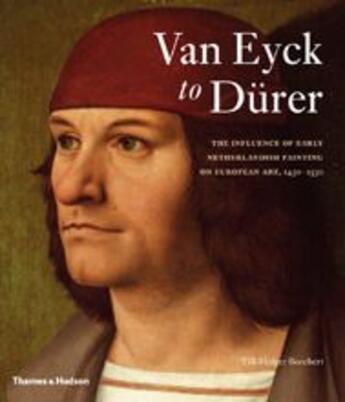Résumé:
Jan van Eyck and Albrecht Dürer are the pre-eminent Flemish and German masters from 1430 to 1530 and giants in this pivotal century in the history of western art.
Van Eyck to Dürer describes how, during generations, the Flemish inspired artists from the Holy Roman Empire and... Voir plus
Jan van Eyck and Albrecht Dürer are the pre-eminent Flemish and German masters from 1430 to 1530 and giants in this pivotal century in the history of western art.
Van Eyck to Dürer describes how, during generations, the Flemish inspired artists from the Holy Roman Empire and influenced the course of artistic development in Europe to an extent rivalled only by the Italian Renaissance. This ambitious book is the first systematic examination of the artistic relationship between the Low Countries and Central Europe during this period.
In addition to well-known (and lesser-known) works by Flemish Primitives such as Van Eyck, Campin, Van der Weyden, Van der Goes and Memling, it also includes masterpieces by famous artists of the calibre of Dürer, Schongauer, Lochner, Altdorfer and Holbein, as well as a selection of artistic gems by less celebrated painters from Germany, Hungary, Austria, the Czech Republic, Poland and Estonia. A selection of sculptures, illuminated manuscripts and prints is also reproduced.
CONTENTS Introductions - Essays Part I Historical Aspects: 1 The Political and Dynastic Relationships Between Burgundy and the Holy Roman Empire; 2 The Role of Towns and their Commercial Networks as Catalysts of Cultural Exchange Part II Art Historical Aspects: 1 Van Eyck, Campin,Van der Weyden: Early Netherlandish Painting and its Predecessors 2 Realistic Tendencies in East European Painting 3 The Influence of Van der Weyden on German Art 4 Dürer and the Low Countries 5 Artists Meet Artists Part III Structural Aspects: 1 Migrating Artists 2 Drawings as a Tool and Medium for Disseminating Information; 3 Graphic Art as a Medium for Dissemination 4 Netherlandish Art Export 5 Sculpting 6 The Influence of Innovations in Netherlandish Art: A Structural Perspective Regionally Arranged Catalogue 1 Cologne, Münster, Middle Rhine 2 Hansa 3 Upper Rhine 4 Swabia 5 Franconia 6 Bavaria 7 Austria 8 Hungary 9 Bohemia, Silesia and Poland
Donner votre avis















